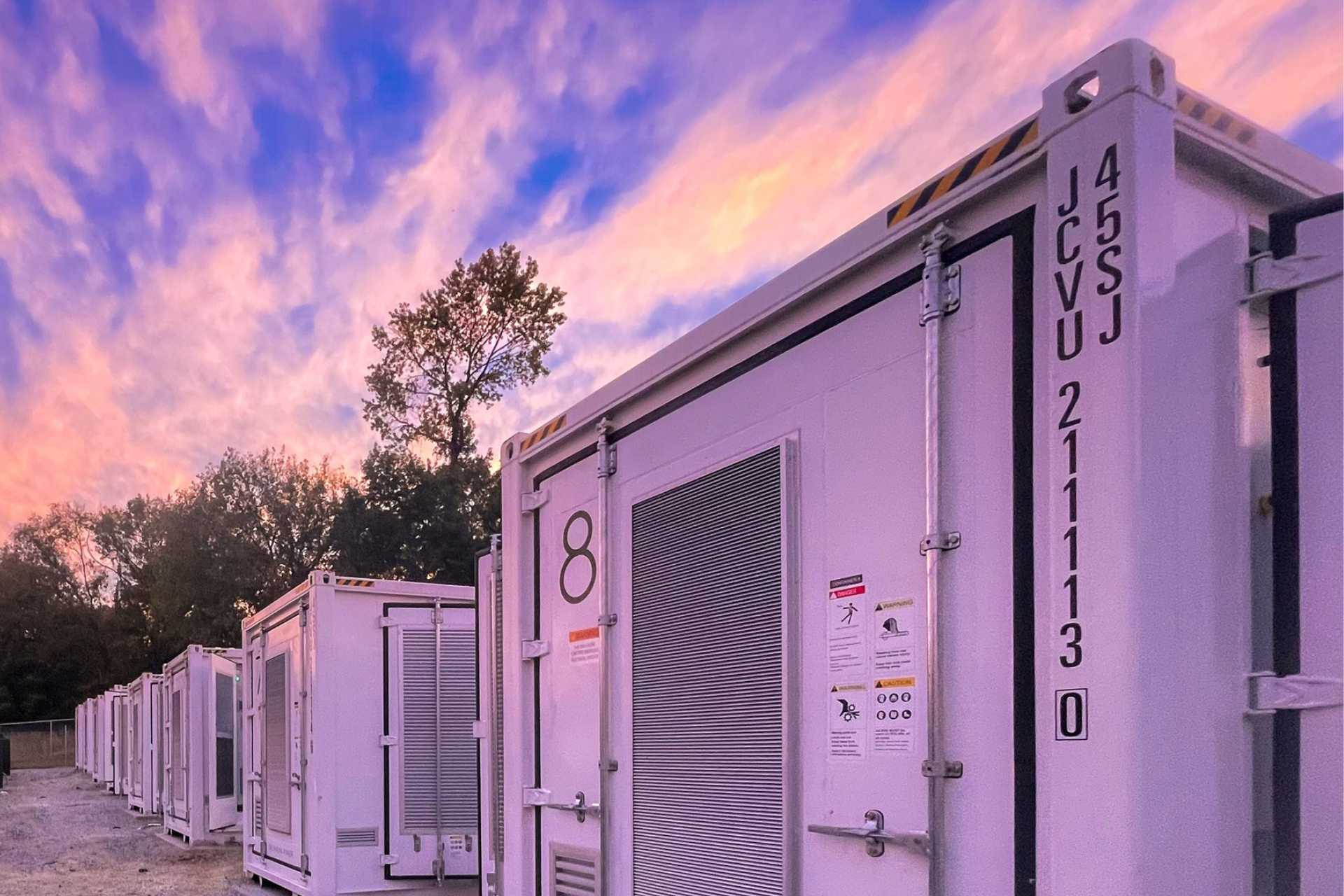
Get the latest climate technology news directly to your inbox.
The data center of the future looks like a massive virtual power plant
Alphabet spinout Sidewalk Infrastructure Partners plans to woo utilities with “data center microgrids.”

Photo credit: Frank Rumpenhorst / picture alliance via Getty Images

Photo credit: Frank Rumpenhorst / picture alliance via Getty Images
In mid-March, Sidewalk Infrastructure Partners, a spinout of tech giant Alphabet that creates holding companies focusing on tech solutions to infrastructure challenges, announced its latest venture: a data center development company with a new vision for how massive compute load could interact with the power grid.
Dubbed Verrus, the new company recently emerged from 18 months in stealth mode, and is set to bring its first data centers online in late 2026. Those data centers, intended to accommodate the massive compute needs of generative AI, are designed to play a fundamentally different role on the grid than their predecessors: acting not just as new load, but as an immense battery.
- The top line: Verrus is betting that electric utilities will soon be a key customer for data center operators. The company’s thesis is that by relying on energy storage systems to “island” from the grid and power down batched workloads, data centers can support the grid, circumvent lengthy interconnection queues, and enable increased renewable energy penetration.
- The market grounding: Utilities around the country are expecting massive data center load growth in the next few years, and are grappling with where to get the generation and grid capacity to meet the demand. While it’s not yet clear exactly how much energy data centers will ultimately need, it's clear that the growing footprint of data centers in combination with load growth of both domestic manufacturing and electrification will strain the grid.
- The current take: Today’s data center developers are essentially real estate developers, said Jonathan Winer, CEO and co-founder of SIP. In the future, they’ll have to be sophisticated asset managers as well, he added, serving both utilities alongside their traditional customers. “FERC and other public utility commissions are much more receptive to providing interconnection for resources, rather than just load,” he said. “To the extent that you can categorize your data center as a resource…that’s just a different conversation.”
Prioritizing the flexibility of data centers isn’t a new concept. Google, for example, has been experimenting with load shifting across data center locations, and developers like Soluna are co-locating data centers dedicated specifically for artificial intelligence with renewables. Most data centers are designed for “five nines'' reliability, Winer said, meaning that they sign power purchase agreements to buy power in order to meet 99.999% of uptime.
“To meet that level of uptime, the electrical engineering is redundant or overengineered,” Winer said. For instance, to reach what’s known as “2N redundancy,” today’s data centers tend to have backup generators; short-duration, rack level batteries; and two types of power planes. This combination of equipment results in two independent and fully operational electrical paths, each of which could handle the entire load independently if one system fails.
But Verrus approaches the electrical engineering architecture for its data centers differently, Winer said.
Verrus data centers will co-locate two different types of compute, both for cloud computing and AI training, and will forgo 2N redundancy and the traditional diesel generator set. They will instead use a single, mid-voltage power plane, and a set of central, software-managed batteries.
“It’s a critical energy microgrid, for lack of a better term, with a battery at its core and a software layer that orchestrates the allocation of power across various different data halls,” Winer said. “That allows us to enter into a far more responsive approach to demand management or demand response with the grid.”
The interconnection challenge for data centers is really about the specific hours throughout the year when the grid is congested, Winer added. Verrus data centers are designed to use their onsite battery storage capacity to “island” from the grid during those times, batching the more flexible AI compute needs, and keeping power up for cloud computing halls.
“We’re utilizing the power more efficiently,” Winer said. “We’re essentially spinning up compute when we need it compared to the power, and we’re helping the load factor of the utility itself, because we’re basically a battery on the grid, rather than merely a consumer of power.”
Are growing concerns over AI’s power demand justified? Hear from Latitude Media's Stephen Lacey and industry-leading experts as they address the energy needs of hyperscale computing, driven by artificial intelligence.
.png)
Are growing concerns over AI’s power demand justified? Hear from Latitude Media's Stephen Lacey and industry-leading experts as they address the energy needs of hyperscale computing, driven by artificial intelligence.
.png)
Are growing concerns over AI’s power demand justified? Hear from Latitude Media's Stephen Lacey and industry-leading experts as they address the energy needs of hyperscale computing, driven by artificial intelligence.
.png)
Are growing concerns over AI’s power demand justified? Hear from Latitude Media's Stephen Lacey and industry-leading experts as they address the energy needs of hyperscale computing, driven by artificial intelligence.
.png)
This isn’t SIP’s first foray into demand response. The company was a minority owner in OhmConnect, which merged with Google Nest Renew to form Renew Home late last year. An SIP holding company, Renew Home operates a load shifting virtual power plant of around one gigawatt.
The thesis for Verrus emerged from SIP’s engagement with Renew Home’s more than 80 utility partners, Winer said. Load growth from data centers was already top of mind for many of those utility C-suites last summer, he added — but now they’re starting to consider the potential for new load to be a resource to the grid.
Verrus currently has a pipeline of active projects in three “key data center markets,” representing hundreds of megawatts of compute power. The company hasn’t yet nailed down interconnection agreements for those projects, Winer added, but it doesn’t anticipate any challenges in that regard.
Which type of batteries each data center will deploy depends on both its specific location, and the needs — and incentive structures — of the local utility. Winer declined to share specific manufacturers or the types of storage the centers will rely upon “until supply chains are locked down.”
Winer believes the shift in mindset around the role of a data center, and who its customers are, is already happening, and that it will progress quickly.
The data center world’s biggest players — hyperscalers like Google, for example — will likely build out their own flexibility in-house, Winer said. But traditional third party data center developers are another matter: “those folks are going to have to evolve,” he said.
“I think the data center developer tomorrow will look very different than the data center developer today,” Winer added. “In the future I’m going to have to operate my data center in conformity with an interconnect agreement, and in order to do that I’m going to need to be pretty sophisticated about how I build that data center and how it orchestrates the use of compute.”
Editor's note: This story was updated on April 22 to clarify that Renew Home operates a virtual power plant of around one gigawatt, not eight gigawatts.





